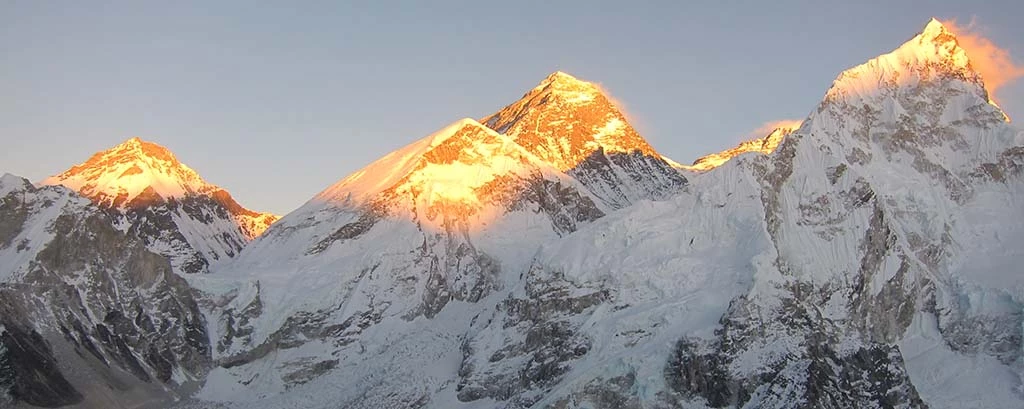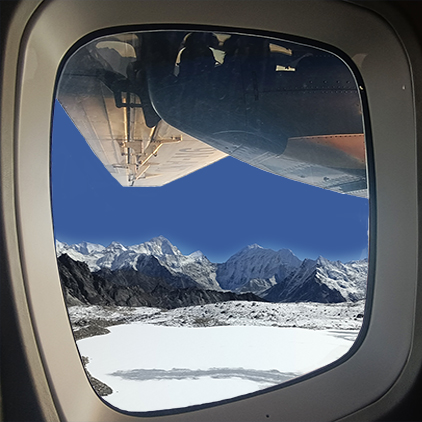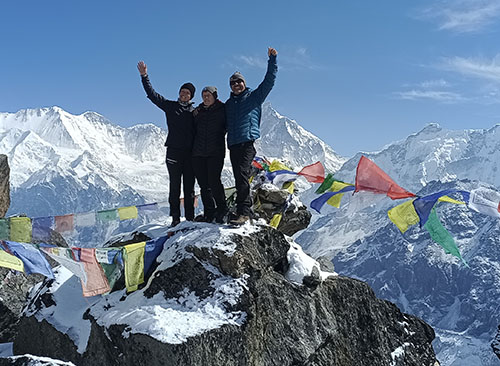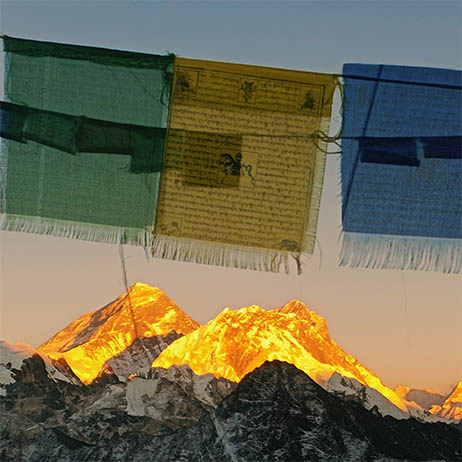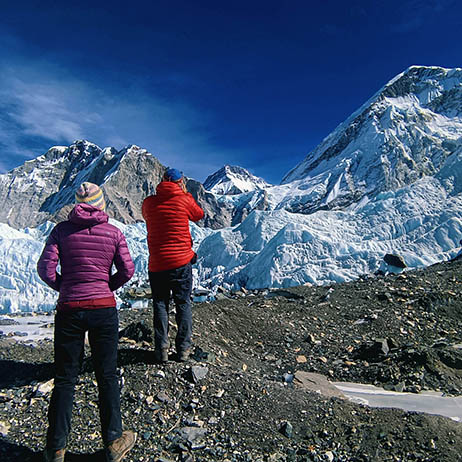Helpful Tips for Planning Your Everest Base Camp Trekking adventure can be cumbersome if it's a new environment. There are many resources that you can find on the internet about the particular trek you choose. Internet and social media are flooded with videos, text, audio, reviews, and recommendations. While these sources can be helpful in planning a perfect trek, most of these information contradict each other and are mostly biased.
Herein provided are some of the helpful tips that are provided by a company that has been operating in the Himalayas for over 15 years. If you are planning for Everest as your next trekking destination, this blog is definitely for you.
Get in Shape
Everest Base Camp Trekking required you to walk in the rugged and remote terrain for at least 5-6 hours each day. As the elevation soars, the oxygen level in the air thins. Your physique and endurance must be in proper condition before you embark on this trek. It is advised that you begin your fitness training at least 3-4 weeks before your trekking date.
Aerobic exercises and endurance training before your trek can prove worthwhile while undertaking this trekking adventure. Physical activities such as cycling, swimming, sprints, and others can loosen your muscle and stretch your nerves which is required for multiple days of travel in the Everest region.
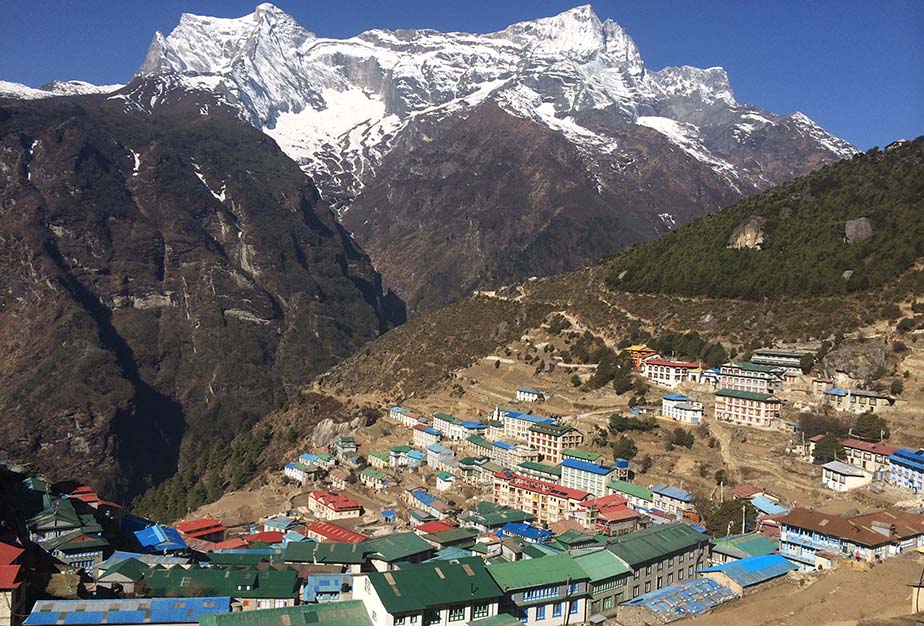
Namche Bazaar and Kongde Ride view.
Altitude Sickness and Prevention on the way to Everest Base Camp Trekking
Altitude sickness, also known as Acute Mountain Sickness (AMS), occurs at elevations above 3000 meters. Common symptoms include dizziness, breathing difficulties, vomiting, nausea, muscle pain, and spasms. It can affect anyone, regardless of physical fitness or gender. Those who have been to high altitudes before without AMS are less likely to experience it again, while first-timers' adaptability to new environments plays a role.
Trekking companies provide professional guides with basic first-aid training to handle medical emergencies. To prevent AMS, there are various methods that, if applied correctly, ensure a safer trekking adventure.
Hydrate Yourself: After hours of walking, your body will be craving hydration. 3-4 liters of water each day is recommended.
Nutritious Diet: It goes without saying that you need nutritious meals during your trek to keep you energized.
Climb High, Sleep Low: As a general rule, you need to elevate to a higher altitude during the day but descend down for your overnight stopover. This helps in the adaptation of your body to higher elevation faster.
Rest Days: There needs to be adequate acclimatization during the trekking period to gradually adapt your body to higher altitudes. Namche Bazaar and Dingboche are popular acclimatization points on Everest Base Camp Trekking Route.
Pack wisely: When trekking to Everest Base Camp, pack wisely for the 12-day journey. Proper clothing and essential gear are crucial, while irrelevant items should be left behind.
Refer to the provided packing list for detailed guidance. Necessary items include warm clothing, sturdy hiking boots, rainproof jackets, sleeping bags, headlamps, and toiletries.
A porter will carry up to 25-30 kilograms for two people, but you'll need a small backpack for essentials like water, electronics, energy bars, and snacks.
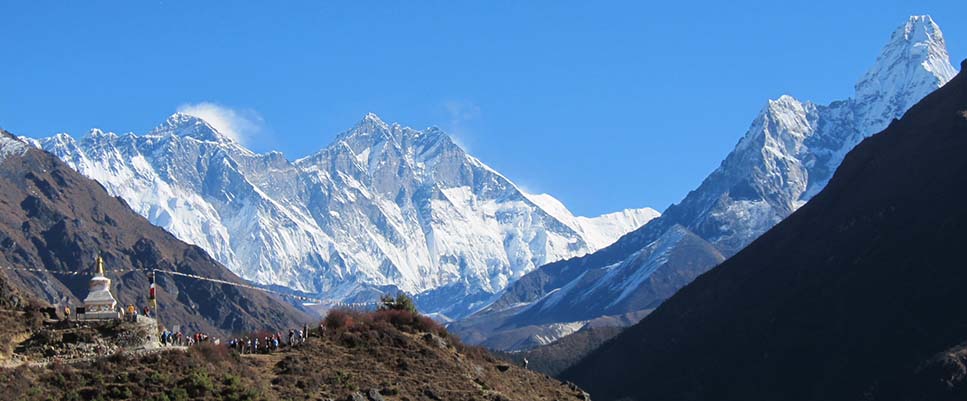
Ama Dablam, Lhotse, and Everest View from On the Way to Everest Base Camp Trekking.
Understand the tradition and culture along the Everest Base Camp Trekking
Navigating the Trekking Route
The Everest Base Camp Trek starts from Lukla and passes through Sherpa villages. The route includes stops at Phakding, Monjo, Namche, Khumjung, Khunde Village, Tengboche, Dingboche, Thukla, Lobuche, Gorakshep, Everest Base Camp, and Kala Patthar before returning to Lukla.
Respect the Local Culture
As geography, people, and practices differ from place to place so does the culture. Nepal has a typical culture that can be shocking in some cases to the Western natives. You must know basic practices that one must know while traveling to Nepal. Some usual cultural practices that you ought to know are :
Greeting a person:
In Nepal, the common way to greet others is by pressing palms together in front of the chest, signifying "I greet the god within you." This sacred gesture is widely used, and locals respond with the same gesture.
Display of Affection and Provocative Clothing:
Nepalese do not appreciate the public display of affection like kissing in public. Also, provocative clothing is not appreciated in rural and sacred areas.
Shoes are kept out of the house:
Shoes are considered dirty, they are kept out of the room in a rack. It is uncommon in Nepalese homes to walk with your shoes on. Especially when in Buddhist Monastery we need to take off shoes.
Eating with Hands:
Unlike in most parts of the world, Nepalese eat with their hands. While some may use a spoon and fork depending on the type of dish, the general population uses their hand for eating.
Temples and Sacred Sites:
Nepalese people follow their religious practices strictly. Properly covered clothing is required when visiting sacred sites, and public displays of affection are not allowed. Consult your guide when entering temples or monasteries for guidance.
Save Environment:
As quoted “Take nothing but Photos, leave nothing but memories”, one must be responsible for the environment they are partaking into. During your treks in Nepal, we suggest you carry a bag with you to bring bag all the waste that you make.
The waste problem has become one of the major challenges in Everest region and we at Visit Himalaya Treks would like to support to negate such environmental effects. If possible don't carry plastic-wrapped food items and others with you. If you have to, then carry back such wrappers in your bag and dispose of them on your return journey.
Additionally, almost all parts of the Everest Base Camp Trek are included in Sagarmatha National Park making it a protected area. You are not allowed to perform any activity that hinders the wildlife and floral riches found in the region. A hefty fine has been set against anyone encroaching and disturbing the protected area.
Guidelines for a Safe and Secured Everest Base Camp Trekking
For beginner trekkers, the EBC trek can be a lifetime new experience with a distinct environment and geography. There are multiple factors that you will have to consider for safety reasons on this trek. Herein discussed are some of the safety tips for your Trek to Everest Base Camp.
Proper Acclimatization:
Adaptation to the higher altitude is paramount before you ascend further. The range of altitude in EBC Trekking is 2880 meters at Lukla and 5545 meters at Kala Patthar. We ascend an average of 300 - 500 meters every day. While this ascent can be comforting in the elevation below 3500 meters, beyond that elevation mark is the AMS-prone zone.
You ought to have at least 2 rest days in between for proper acclimatization. Trekkers usually opt for acclimatization at Namche Bazaar(3440m) and Dingboche (4410m). These rest days help in trekking further high up without many issues and problems. Your stressed-out physique will get a rest day during that time and also your lungs to adapt to the thin air of higher elevation.
Pack Smart:
Packing for Everest Base Camp Trek can be confusing if you don't have prior experience. It is necessary to pack the right items in your bag so your bag is light enough to carry but you still have all the required clothing and gear.
It is crucial to strike a balance between not missing out on the essential things but also not overburdening yourself. The temperatures during the day and night time can vary significantly. Warm fleece jackets, down jackets, and windproof light jackets are a must.
For the torso, choose lightweight and durable trekking pants that can be converted into shorts if necessary. You must carry at least 3 pairs of such pants in your bag. When it comes to footwear, high-quality, waterproof hiking boots are recommended. These boots must be used before your trek to prevent blisters and other wounds which is the case with most new shoes.
Alongside pack several moisture-wicking socks and cushioned socks. Don't forget to pack a warm hat, sunglasses, a buff, and lightweight gloves to shield yourself from cold temperatures and sunburn.
Most of these items can be bought in Thamel, Kathmandu after your arrival.
However, we recommend that you buy your trekking boots in your country and take a hike with them before arrival. If you are buying new shoes, do so at least 2 months before your trek. Walk on them to break in and have a proper fit.
Other essentials include a sleeping bag (which can be rented in Kathmandu), headlamps with extra batteries, a thermal water bottle, water purification tablets, and others.
Stay Hydrated:
It is of utmost importance for you to stay hydrated while trekking. Hydration directly impacts the energy level of an individual and affects physical performance. Trekking to EBC is filled with numerous switchback ascents which require hours of climbing.
These climbs lead to the loss of water and electrolyte from the body. In return, you will feel hot and sweaty with dizziness slowly kicking in. Timely hydration is a must while trekking in Nepal. Fatigue, Dizziness, and Muscle Cramps are common issues related to dehydration.
Make it a priority to drink plenty of water during the day. It is advised to drink at least 3-4 liters of water each day on your trek. Take regular breaks during your trekking hours to hydrate yourself and re-energize. Trekking in higher altitudes, the air is drier which increases the breathing pace and water loss due to exertion. One must be careful about the body’s hydration needs during the trek.
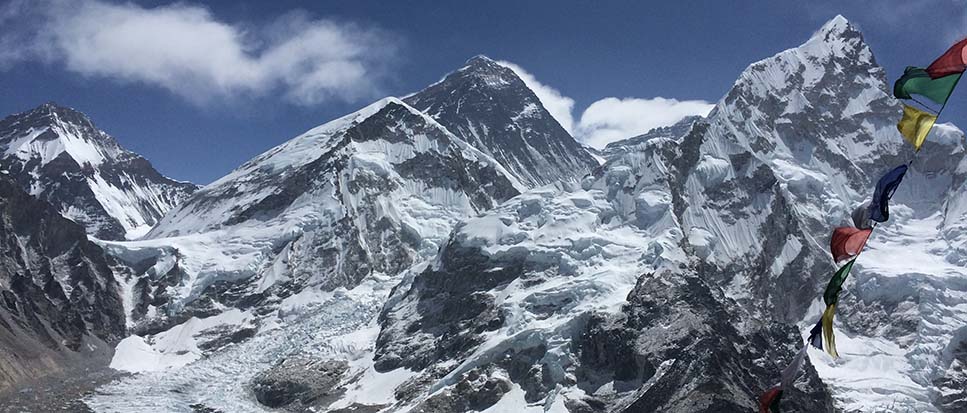
Khumbu Ice Fall, Nuptse and Everest view from Kala Patthar View Point.
Follow the Rules:
On your EBC Trek, you will enter into the jurisdiction of Sagarmatha National Park and the Sherpa community. As with any other place, they have their own set of rules and regulations that trekkers need to abide by while trekking.
National Park requires you to not litter anywhere on the trekking trail. You cannot disturb the wildlife, plants, and flora of the region at any cost. You are required to carry back any waste that you make. Apart from that, you are required to follow the orders of your trekking guide on the journey. Besides these, mockery, loud noises, public disturbances, nudity, and display of affection are all restricted in the area.
Stay on the designated Path:
Various trails originate and converge with the original EBC Trek route. You are expected to stay on the designated path throughout the trek. Always seek local help if you are trekking individually and are confused about the pathways. Having a professional trekking guide can be beneficial to navigate the confusing trails of Mt. Everest Base Camp.
Be Prepared for Emergencies:
The foremost thing to do in case of any uncertain emergencies is to not panic. The trail leading to EBC is dotted with Sherpa villages. There is a village within a time frame of every 30 minutes to 1 hour in the area. If you need any help, it will arrive but you will have to be patient for the time being.
It is advised that you purchase travel insurance that covers evacuation up to 6000 meters for the trek to Everest. You should have proper training in using a first aid kit in case of medical issues. One must have decent knowledge about curing AMS in case something unprecedented happens.
To learn more deeply about the EBC trek, our previous Blog All You Need To Know Before Trekking To Everest Base Camp will help with a good plan and preparation lifetime trekking journey to the Base Camp of Mt. Everest.
Conclusion Helpful Tips For Planning Your Everest Base Camp Trekking
Trek to Everest Base Camp is a once-in-a-lifetime adventure that is worthwhile for anyone. This journey, though strenuous, is worth it. If you are adequately prepared this trek will be comfortable and full of joy. This is a traverse through enigmatic landscapes, cascading waterfalls, diverse flora and fauna, amusing mountain vistas, quaint villages, sacred sites, and many more.
Visit Himalaya Treks is a veteran company that has been successfully organizing Everest Base Camp Trek for over 2 decades. Our years of experience in Himalayan trekking have made us one of the best companies in Nepal for adventure. Join our Everest Base Camp Trek to Create lifetime travel memories in Nepal with Visit Himalaya Treks.

